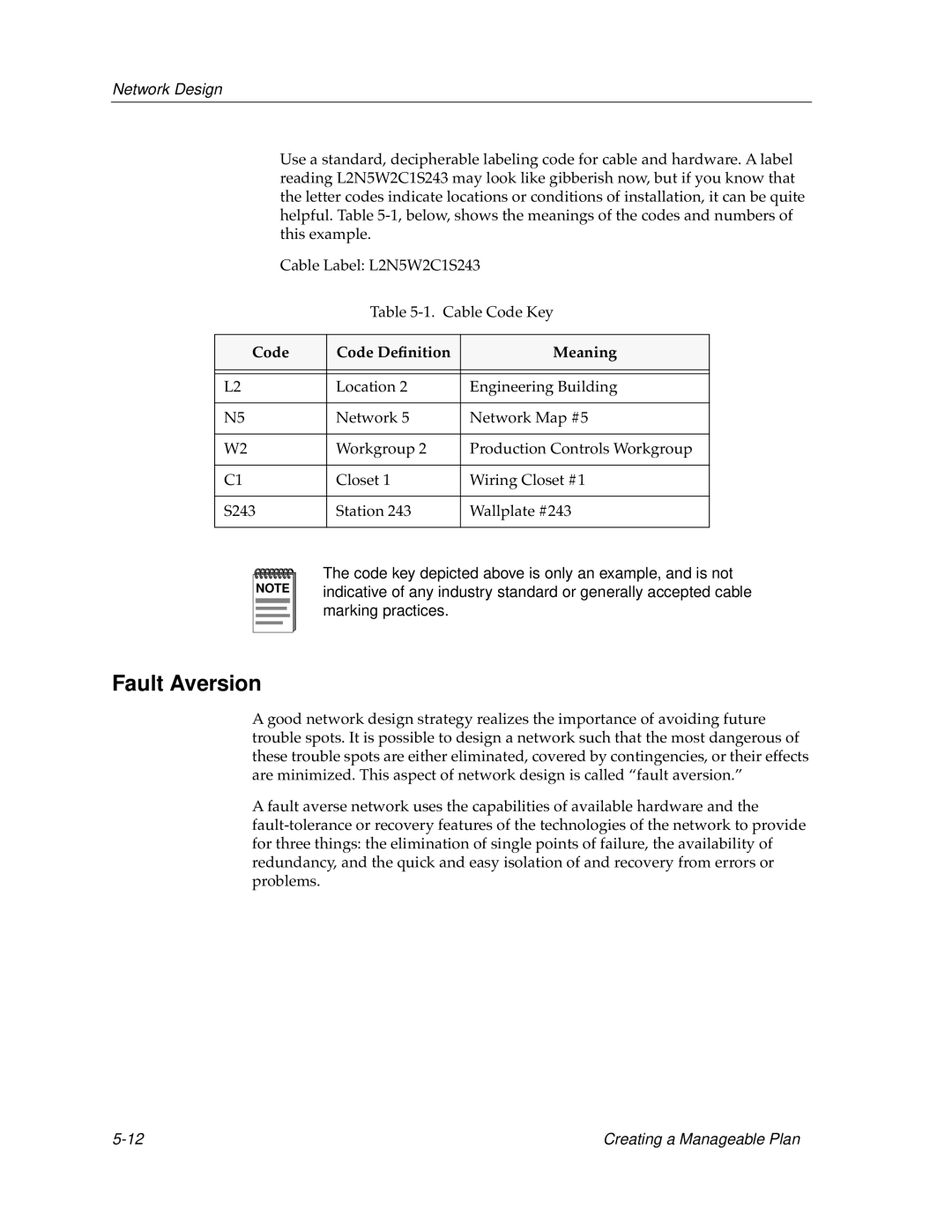
Network Design
Use a standard, decipherable labeling code for cable and hardware. A label reading L2N5W2C1S243 may look like gibberish now, but if you know that the letter codes indicate locations or conditions of installation, it can be quite helpful. Table
Cable Label: L2N5W2C1S243
Table
Code | Code Definition | Meaning |
|
|
|
|
|
|
L2 | Location 2 | Engineering Building |
|
|
|
N5 | Network 5 | Network Map #5 |
|
|
|
W2 | Workgroup 2 | Production Controls Workgroup |
|
|
|
C1 | Closet 1 | Wiring Closet #1 |
|
|
|
S243 | Station 243 | Wallplate #243 |
|
|
|
NOTE |
The code key depicted above is only an example, and is not indicative of any industry standard or generally accepted cable marking practices.
Fault Aversion
A good network design strategy realizes the importance of avoiding future trouble spots. It is possible to design a network such that the most dangerous of these trouble spots are either eliminated, covered by contingencies, or their effects are minimized. This aspect of network design is called “fault aversion.”
A fault averse network uses the capabilities of available hardware and the
Creating a Manageable Plan |
